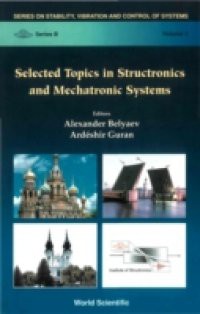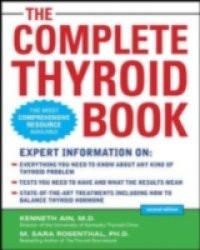In the past twenty years, the scientific community has witnessed a technological revolution in products and processes, from consumer goods to factory automation systems. This revolution is based on the integration, right from the design phase, of the best that current technology can offer in electronics, control systems, computers, structures and mechanics. The terms that have emerged, for the synergetic approach to design, and integration of sensors, actuators, computers, structures and mechanics, are “structronics” and “mechatronics”. Structronics can be viewed as an integration of mechatronic systems into structures, which emphasizes a synergistic integration beginning at fertilization. Similar to mechatronics (established in the 1980s), structronics is recognized as one of the essential technologies in the 21st century.This comprehensive reference book gives an overview of the current state of structronics and mechatronics in both structural/mechanical and material systems. Consisting of nine self-contained chapters, it presents recent developments and covers emerging topics in the field.The key features include:• treatment of the nonholonomic variables in robotics• attenuation of fluid flow pulsation in hydraulic systems• presentation of mathematical modeling and experiments on complex nonlinear dynamics of washing machines• a survey of research findings in hydraulic gap control of rolling mills• detailed description of mathematical modeling and nonlinear control of a temper controlling mill• applications of high frequency dynamics in engineering structures• development of novel computational methods to include plasticity and damage in flexible multibody systems• new trends in optimal design of engineering structures• a review of ionic polymer metal composites (IPMCs) as sensors, actuators and artificial musclesSelected Topics in Structronics and Mechatronic Systems will be of interest to engineers, materials scientists, physicists and applied mathematicians.Contents:On the Use of Nonholonomic Variables in Robotics (H Bremer)Compensators for the Attenuation of Fluid Flow Pulsations in Hydraulic Systems (J Mikota)Some Aspects of Washing Complex Nonlinear Dynamics (M Bolteǽar)Analysis and Nonlinear Control of Hydraulic Systems in Rolling Mills (R M Novak)Mathematical Modeling and Nonlinear Control of a Temper Rolling Mill (S Fuchshumer et al.)Combining Continuous and Discrete Energy Approaches to High Frequency Dynamics of Structures (A K Belyaev)Computational Methods for Elasto-Plastic Multibody Systems (J Gerstmayr)New Trends in Optimal Structural Control (K G Arvanitis et al.)Ionic Polymer–Conductor Composites (IPCC) as Biomimietic Sensors, Actuators and Artificial Muscles (M Shahinpoor & A Guran)Readership: Engineers, materials scientists, physicists and applied mathematicians.Key Features:Unlike other books which assume reader knowledge on how to employ PowerPoint techniques in presentations, this book goes into great detail on the matter (e.g. how to create a hyperlink, how to save a group of elements as a scalable picture, etc.). The book is therefore very practical and even suggests a methodology for content selection















